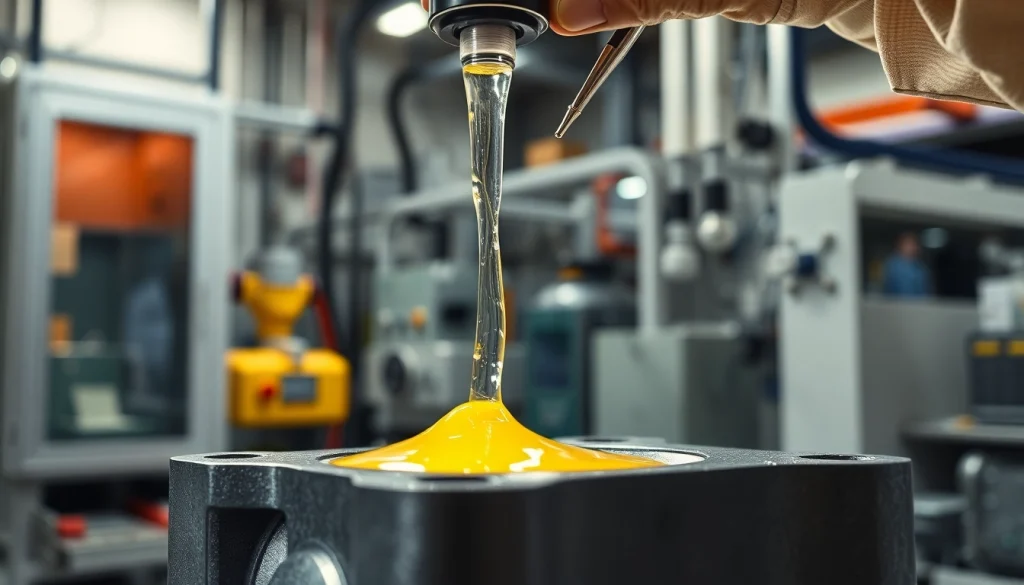Understanding Infusion Resins
What are Infusion Resins?
Infusion resins are specialized polymer compounds designed for use in composite manufacturing processes, particularly vacuum infusion techniques. Characterized by their low viscosity, these resins flow easily into dry fiber textiles, filling voids and ensuring even distribution throughout the composite material. This process significantly enhances the properties of the final product, offering a lightweight yet strong alternative to traditional laminating methods.
The infusion process typically involves creating a vacuum in a closed mold, which draws resin into a pre-formed fiber assembly. This technique not only reduces air entrapment but also enables greater control over the material properties, such as strength and flexibility. To learn more about the applications and types of infusion resins, you can access additional detailed resources on infusion resins.
Properties of Infusion Resins
Infusion resins exhibit several key properties that distinguish them from other types of resins. These include:
- Low Viscosity: Allows easy flow through the fiber matrix.
- Controlled Curing: Can be engineered to cure at room temperature or elevated temperatures.
- High Adhesion: Ensures strong bonding with various fibers, including carbon, glass, and aramid.
- Good Working Time: Provides enough pot life for processing without premature curing.
- Enhanced Mechanical Properties: Results in composites with excellent tensile and flexural strength.
Applications in Composite Manufacturing
The versatility of infusion resins makes them ideal for a wide range of applications in composite manufacturing. Some of the prominent uses include:
- Aerospace Components: Infusion resins are critical in the production of lightweight aerospace structures that require high strength-to-weight ratios.
- Marine Industry: Used extensively in boat building for hulls and components that demand durability and resistance to water damage.
- Wind Turbine Blades: Infusion resins help optimize the structural performance of large blades, enhancing the energy efficiency of wind turbines.
- Automotive Parts: Employed in the manufacture of lightweight, high-performance automotive components that contribute to fuel efficiency.
Benefits of Using Infusion Resins
Enhanced Material Performance
Using infusion resins leads to superior material performance in composite structures. The infusion process minimizes air voids, improving the integrity and overall mechanical properties of the composites. This is particularly vital in high-stress applications, where material failure can have significant consequences.
Cost-Effectiveness in Production
Infusion resins offer economic advantages, particularly in large-scale production. The process allows for the production of complex shapes with fewer materials, reducing waste. Furthermore, the quick changeover and reduced labor costs associated with infusion methods make them appealing for manufacturers looking to optimize production efficiency.
Environmental Sustainability
Incorporating infusion resins into the production process can also contribute to sustainability. Many modern infusion resins are designed with ecological considerations in mind, often containing bio-based components or exhibiting lower VOC emissions. These attributes align with the industry’s movement towards greener manufacturing practices.
Choosing the Right Infusion Resins
Viscosity and Flow Characteristics
Selecting the right infusion resin involves careful consideration of its viscosity and flow characteristics. Resins with low viscosity are preferable as they ensure better penetration into the fiber matrix and facilitate quicker fill times. Testing different resin formulations can help determine the optimal viscosity for specific applications.
Compatibility with Reinforcements
Ensuring that infusion resins are compatible with the chosen reinforcement materials (such as fiberglass, carbon fiber, or aramid) is crucial. Compatibility affects adhesion, which directly influences the mechanical performance of the final composite product. Conducting adhesion tests can confirm optimal compatibility between the resin and reinforcement fabrics.
Temperature Resistance
Infusion resins vary widely in their thermal resistance. It is vital to select resins that can withstand the operational temperatures they will face in actual applications. Resin manufacturers often provide specific temperature ratings, guiding users to choose formulations that meet or exceed these requirements.
Application Techniques for Infusion Resins
Vacuum Bagging Process
The vacuum bagging process is a common application technique for infusion resins. This procedure involves placing the dry reinforcement material inside a mold, covering it with a plastic bag, and then creating a vacuum to remove air. Once a vacuum is established, the infusion resin is drawn into the mold, filling the fibers to achieve a complete composite structure. Proper sealing and monitoring of the bag are crucial to ensure success.
Direct Infusion Method
In contrast to vacuum bagging, the direct infusion method allows for resins to be injected directly into the pre-formed fiber part without creating a vacuum. This technique can be advantageous for intricate designs where uniform distribution is critical. However, it requires careful management of flow rates and pressures to avoid issues such as fiber washout.
Common Challenges and Solutions
While infusion resins offer many benefits, they are not without challenges. Some common issues include:
- Air Trapping: This can occur if the fiber architecture is not designed to facilitate resin flow. Ensuring proper venting and pathway design can mitigate this issue.
- Inconsistent Resin Flow: Variations in resin viscosity or improper bagging techniques can lead to uneven flow. Regular viscosity testing and thorough training on application techniques can alleviate these pitfalls.
- Curing Issues: Improper curing can lead to subpar material performance. It’s essential to follow manufacturer guidelines on curing times and environmental conditions closely.
Future Trends in Infusion Resins
Advancements in Resin Technology
Emerging technologies are paving the way for improved infusion resins. Innovations include the development of faster-curing systems, enhanced fiber compatibility, and bio-based resins that reduce environmental impact. Ongoing research and development efforts aim to create resins with optimized mechanical properties while minimizing their ecological footprint.
Integration with Automation
As the composite manufacturing landscape evolves, the integration of automation in the application of infusion resins is becoming increasingly common. Automated mixing, dispensing, and monitoring systems enhance production consistency and efficiency, allowing manufacturers to scale operations while maintaining quality.
Market Demand and Innovation
The demand for advanced composite materials continues to grow across various industries, including aerospace, automotive, and renewable energy. This rising need fuels innovation in infusion resin formulations, pushing manufacturers to develop new materials that meet specific performance and environmental criteria. Keeping abreast of these trends can help businesses stay competitive.
